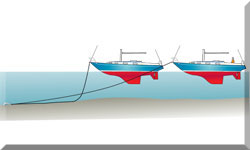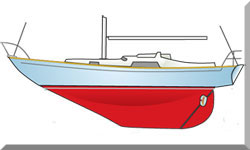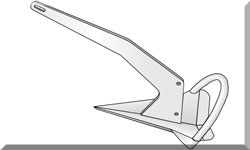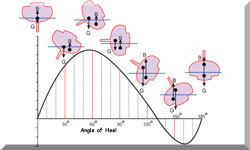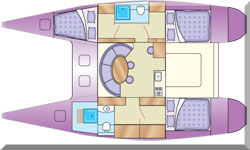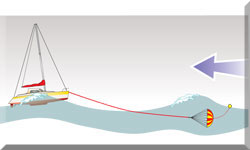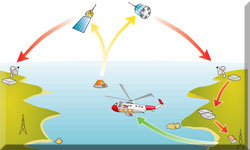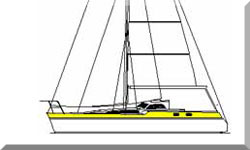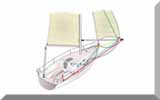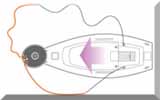- Home
- Electronics & Instrumentation
- DSC Radio
DSC Radio & Pushbutton Distress Calls
All fixed VHF radios produced today have DSC radio (Digital Selective Calling) functionality built in as standard. Prior to the advent of DSC equipped VHF radios, all VHF communication was limited to open-channel voice traffic.
This standardization means that any new fixed VHF you install will have DSC, making it crucial to understand and utilize its features for enhanced safety. Older vessels without DSC might consider an upgrade to benefit from its advantages in emergency situations.
GMDSS Sytem
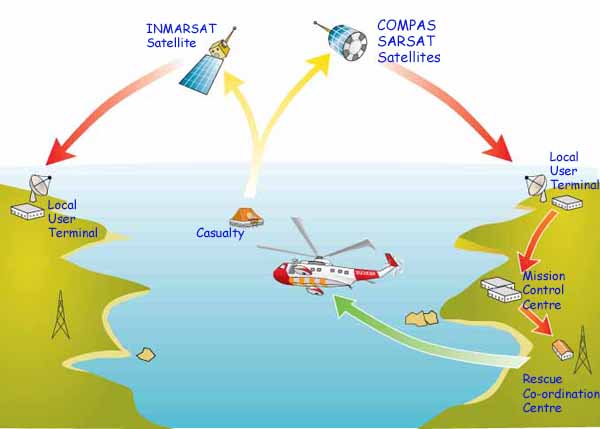 DSC Radio is a part of the Global Maritime Distress and Safety System (GMDSS)
DSC Radio is a part of the Global Maritime Distress and Safety System (GMDSS)This internationally recognized system provides a framework of safety procedures and communication protocols, with DSC forming a key digital communication backbone for distress alerts, safety broadcasts, and routine calls, ensuring interoperability across the maritime world.
Everyone could eavesdrop on your conversations, and distress calls could go unanswered due to the widespread misuse of channel 16.
All this changed with the arrival of the Global Maritime Distress and Safety System (GMDSS) and the DSC VHF radio.
DSC uses VHF channel 70 to transmit and receive digital messages. It's vital to remember that no voice communication is permitted on that channel; it's reserved solely for DSC which enables you to selectively contact other stations and in digital format (an MMSI number), or nominate another channel for voice communication.
DSC Radio and MMSI
In the UK, Maritime Mobile Service Identity (MMSI) numbers are assigned as a part of the ship's radio licensing procedure. These nine digits number are used to uniquely identify a radio station, acting like a digital fingerprint for your vessel.
The MMSI number has a standard format and identifies the type of station, country of registration and vessel identity, and can be programmed into a DSC equipped VHF radio just like entering a number into a mobile phone. It's paramount to ensure your MMSI is correctly programmed and registered, as this is the key identifier in any DSC transmission, especially distress alerts. Keeping this information up-to-date is also essential.
Alternatively, groups of MMSI's can be programmed in, effectively creating a net to which communal broadcasts can be made. This is particularly useful for organized events or fleets.
Here's how to:
Distress Calls and DSC Radio
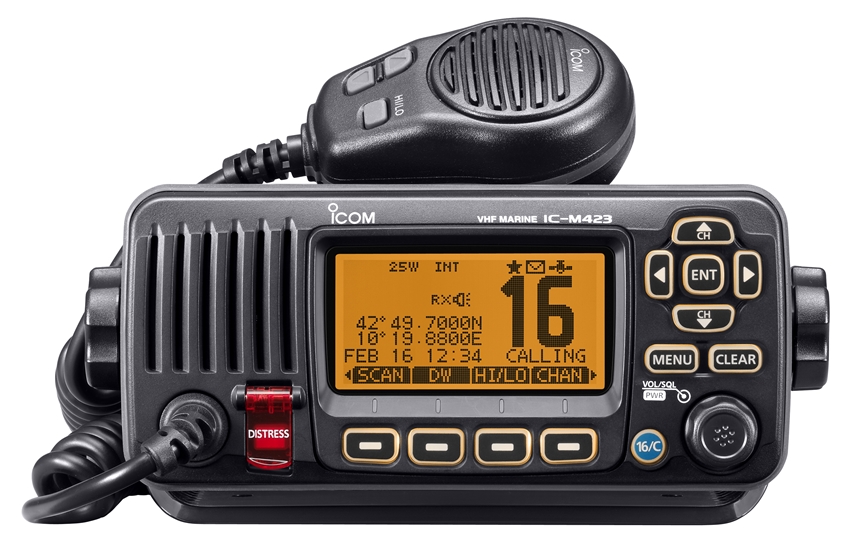 The Distress button is protected from accidental use by a lift-up flap
The Distress button is protected from accidental use by a lift-up flapBut by far the most important feature of DSC is that it provides a safer way of placing a distress call to the coastguard. A DSC distress message includes all the vital information required by the authorities - MMSI, current position and time of call - to initiate a rescue mission. This message is digitally transmitted with a higher probability of being received and understood by rescue coordination centers and nearby vessels equipped with DSC.
Sending a distress message is as simple as selecting the nature of the distress from a scroll-down list on screen and pressing the distress button, dramatically improving the chance of a successful message than a MAYDAY call on channel 16.
However, it's crucial to understand the different categories of DSC messages beyond distress, including urgency for situations not immediately life-threatening but requiring prompt attention, and safety for transmitting navigational and meteorological warnings. Using the correct message type is essential for effective communication and avoiding unnecessary alarms.
If the VHF set is interfaced with the GPS, then the position information is fully automated; otherwise it must be entered manually. Connecting your DSC radio to your GPS unit via NMEA standards ensures that your precise location and time are automatically included in any distress alert, saving critical time in an emergency.
Understanding how to establish this interface and verify its proper function is a key skill for DSC users. Furthermore, integration with AIS (Automatic Identification System) can offer additional benefits, potentially allowing you to directly call AIS targets in advanced setups.
Beyond distress calls, experienced sailors will want to master other DSC functions. Selective calling allows direct, private communication with other vessels by their MMSI, while group calling enables efficient communication within predefined groups. Knowing the protocols for initiating and responding to these call types enhances your communication options.
To fully utilize your DSC radio, understanding its setup and programming is vital. This includes accurately entering your vessel's MMSI, configuring the GPS interface, and potentially setting up group MMSIs. Familiarity with your radio's menu structure and the procedures for these tasks is essential.
Once set up, knowing how to make and receive routine DSC calls, including selecting a working voice channel, is important for everyday communication. Keeping a log of DSC communications, especially those related to safety, is also a good practice.
While DSC offers significant advantages, it's wise to be aware of its limitations. VHF range still applies, and in remote areas, DSC may not always reach a receiving station. Therefore, maintaining proficiency in traditional voice communication on appropriate channels remains a crucial backup.
Handheld DSC VHF Radio
It had to come of course; handheld VHF radios with both DSC and GPS built in. These portable units provide a vital backup in emergencies, especially if the primary radio system fails or in situations like abandoning ship to a liferaft. The integrated GPS ensures your position is transmitted even if you are unable to communicate it verbally.
While they represent a significant safety investment, understanding their operational nuances and battery life is crucial for effective use. Some advanced DSC radios, both fixed and handheld, may also offer features like position reporting to other vessels or enhanced logging capabilities, which experienced users may find beneficial.
To ensure your DSC system is always ready, regular maintenance and testing are essential. This includes checking connections, inspecting cables, and periodically performing test calls. Understanding basic troubleshooting steps for common issues, such as call failures or loss of GPS data, can save time and frustration.
Finally, being aware of the specific regulations and licensing requirements for DSC radios in your operating areas, potentially extending beyond the UK and US, is crucial for compliance, especially for those cruising internationally.
DSC VHF Radio Issues: Your Questions Answered...
Recent Articles
-
Sailboat Flag Etiquette: A Guide to International & Courtesy Flags
Oct 18, 25 04:02 AM
Master Sailboat Flag Etiquette with this definitive guide. Learn the rules for the Ensign, Burgee, and Courtesy Flag, plus sizing & legal compliance from an experienced ocean sailor. -
The Essential Blue Water Sailing Guide: Planning, Safety & Seamanship
Oct 17, 25 05:00 AM
The definitive Blue Water Sailing Guide from an RYA Yachtmaster. Master vessel preparation, offshore safety systems, watchkeeping, and long-distance seamanship. -
Preparing Your Sailboat for Storage: Hauling Out & Laying-Up
Oct 17, 25 04:26 AM
A guide to Sailboat Hauling Out & Laying-Up ashore. Learn the essential steps, from engine winterisation and safely positioning strops to managing damp & rigging, for a worry-free lay-up.

